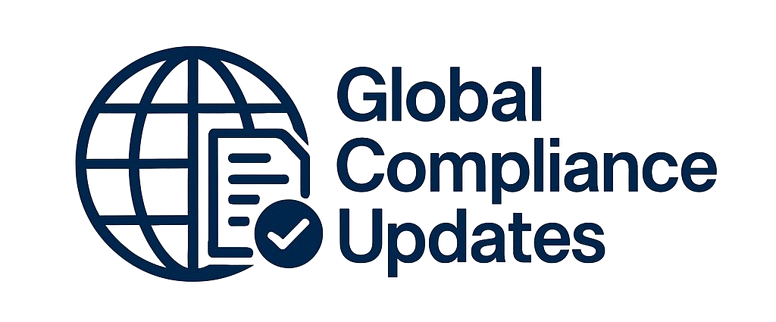Managing employee performance is a critical role for all leaders, of any group, even volunteers and family members. Expected outcomes depend on the leader’s ability to set clear performance expectations (outcomes) and in some situations help by defining methods or processes that are to be used.
Periodically an employee may become disconnected from the outcome (goals), or processes and this situation must be quickly assessed, and action be taken.
To wait, defer, or “hope” it will get better is not an option as both the organization's performance and impact on co-workers start to take hold and can have a compounding negative impact. Addressing both technical ability and behavioral issues must be done expediently and with proper alignment to policy along with regulatory boundaries for such action.
The risk is real for doing it wrong, lawsuits and negative public relations, are two of the areas of concern. Having a leadership team that is well-advised and consistently applies best practices and approaches to performance management is critical to long-term success.
Quotes:
- "Terminations expose the employer to a significant risk of wrongful discharge; good preparation is your best defense."
- "Most employers are either too eager to fire or too slow to terminate Our goal is to get it right."
- "Terminations may be a business decision but it never seems that way to the employee being terminated.
WHY SHOULD YOU ATTEND?
In spite of good hiring and inspired leadership, all supervisors ultimately must deal with someone with Toxic Attitude Syndrome. Whether it's a crummy attitude, attendance, or just being unable to do good work; employee performance issues often consume large amounts of time, energy, and emotion.
In fact, 57% of employees have witnessed abusive or intimidating behavior, and probably 100% work with someone who isn't pulling their weight.
AREA COVERED
- How to start off on the right foot by creating clear expectations
- How poor performance affects organizational performance and work environments
- How progressive discipline policies can hurt you
- Why probationary periods may be a bad idea
- What is employment-at-will and when can you use it?
- The key concepts in a just cause
- Steps for conducting disciplinary investigations
- How to hold employees accountable for sustained change
- A simple system for determining how to coach employees
- Dealing with difficult people
- 11 barriers supervisors face in managing behavior
- Methods for objectively Documenting Toxic Attitude Syndrome
- How to prepare for termination
- How to prepare for and conduct a disciplinary meeting
- Performance Improvement Plans - Receive a sample form
- Setting SMART goals for employee performance
- How to use last-chance warnings
WHO WILL BENEFIT?
- Managers and supervisors who have responsibility for corrective action
- Human resources professionals
- People who aspire to leadership and supervisory positions
In spite of good hiring and inspired leadership, all supervisors ultimately must deal with someone with Toxic Attitude Syndrome. Whether it's a crummy attitude, attendance, or just being unable to do good work; employee performance issues often consume large amounts of time, energy, and emotion.
In fact, 57% of employees have witnessed abusive or intimidating behavior, and probably 100% work with someone who isn't pulling their weight.
- How to start off on the right foot by creating clear expectations
- How poor performance affects organizational performance and work environments
- How progressive discipline policies can hurt you
- Why probationary periods may be a bad idea
- What is employment-at-will and when can you use it?
- The key concepts in a just cause
- Steps for conducting disciplinary investigations
- How to hold employees accountable for sustained change
- A simple system for determining how to coach employees
- Dealing with difficult people
- 11 barriers supervisors face in managing behavior
- Methods for objectively Documenting Toxic Attitude Syndrome
- How to prepare for termination
- How to prepare for and conduct a disciplinary meeting
- Performance Improvement Plans - Receive a sample form
- Setting SMART goals for employee performance
- How to use last-chance warnings
- Managers and supervisors who have responsibility for corrective action
- Human resources professionals
- People who aspire to leadership and supervisory positions
Speaker Profile
 Bob Verchota
Bob Verchota
Bob Verchota, SPHR, is the President and owner of RPVerchota & Associates, a human resources and management practices consulting firm. He has over 30 years of human resources and operational leadership experience. His most recent corporate assignments include serving as VP Support Services, VP of Ancillary Services and Human Resources, and VP Human Resources. Focus areas include organization change and employee development, talent acquisition, risk management, compensation and benefits, labor and employee relations, performance improvement, and other operational issues. Academic pursuits include an undergraduate degree in Business Administration, graduate degree in Healthcare Administration (MHA), and doctoral work in Organization Development EdD …
Upcoming Webinars

ChatGPT and Project Management: Leveraging AI for Project M…

Workplace Investigations 101: How to Conduct your Investiga…

Project Management for administrative professionals

The Monte Carlo Simulations in Excel for Risky Investments

Onboarding is NOT Orientation - How to Improve the New Empl…

Dealing With Difficult People: At Work & In Life

Transform Data into Insights: A Beginners Guide to Excel Pi…

Construction Lending And Real Credit Administration: Evalua…

Understanding Accounting for non - Accounting professionals

Harassment, Bullying, Gossip, Confrontational and Disruptiv…

New Form 1099 Reporting Requirements: 2025 Compliance Update

Human Error Reduction Techniques for Floor Supervisors

HR Metrics and Analytics 2025 - Update on Strategic Plannin…

Treating Employees Like Adults: Discipline versus Empowerme…

7 Ways To Beat Burnout: Without Quitting Your Job


How to Write Procedures to Avoid Human Errors

Handbook Overhaul 2026: Compliance, OBBB Act & Beyond

FDA Proposes Framework to Advance Credibility of AI Models

Ethical Terminations: Navigating Employee Exits with Legal …

Understanding EBITDA – Definition, Formula & Calculation

Project Management for Non-Project Managers - Scheduling yo…

4-Hour Virtual Seminar on Hidden Secrets of Selling & Marke…

Validation Statistics for Non-Statisticians

Data Integrity and Privacy: Compliance with 21 CFR Part 11,…


The Alphabet Soup: When the FMLA, ADA, COBRA, and Workers' …

Talent Management: How to Leverage AI and ChatGPT Tools for…


Offboarding with Care: Conducting Legal & Ethical Employee …

2-Hour Virtual Seminar on How to Conduct an Internal Harass…

Payments Fraud Detect & Prevent Check, ACH and P-Card Schem…

Managing Toxic & Other Employees Who have Attitude Issues



Reduce Stress in the Workplace: Effective Ways to Handle Co…





Excel - Pivot Tables - The Key To Modern Data Analysis and …
